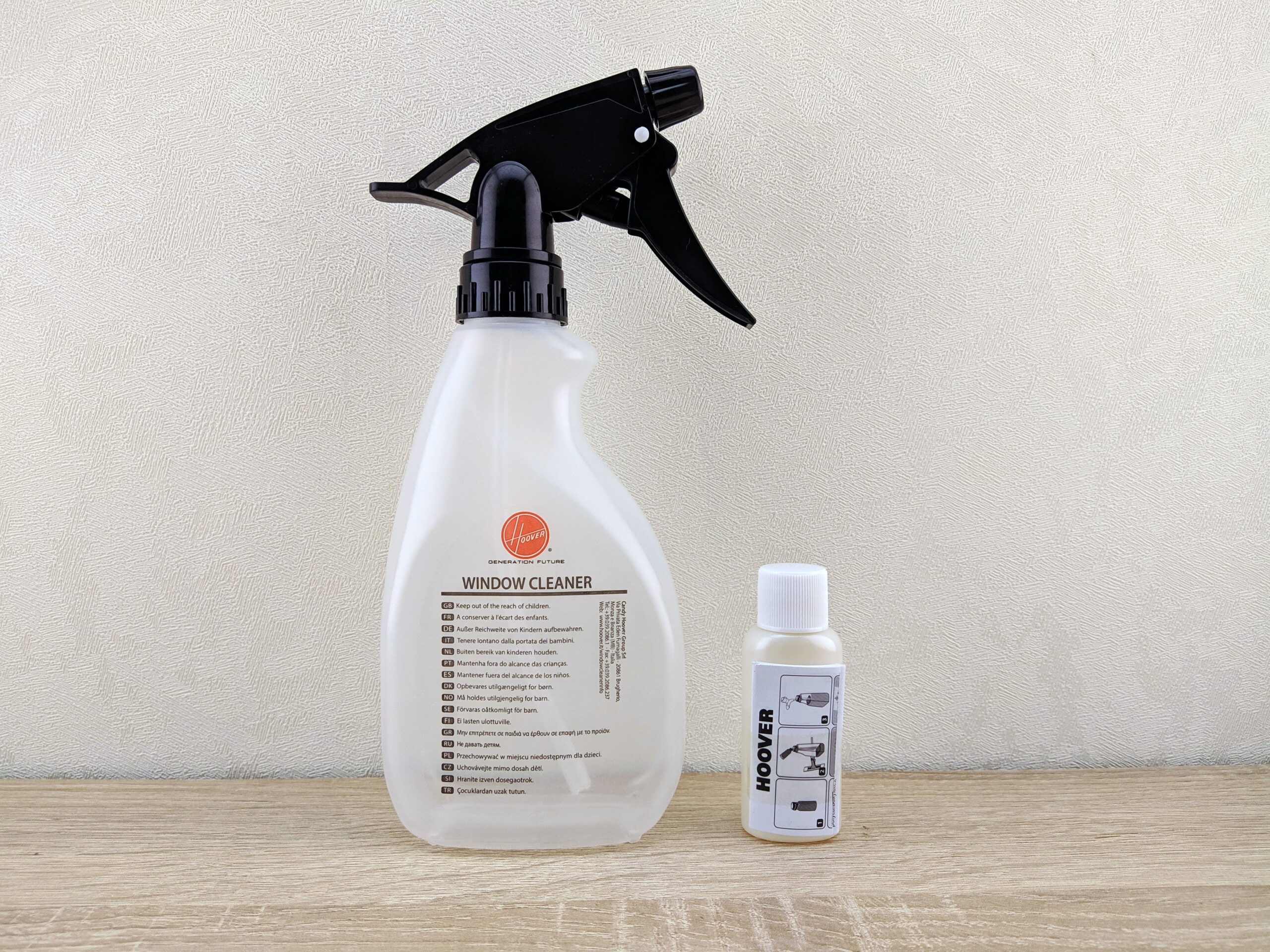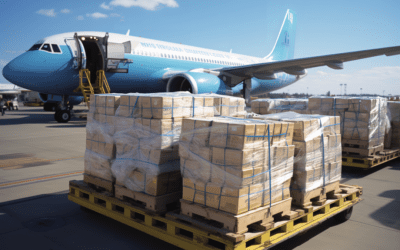Providing products to keep homes, businesses, and communities clean and sanitary is essential. Household cleaners are a vital part of making that happen. But what individuals may not realize is the logistics of getting these products to market can be a challenging process.
Before a single bottle of cleaner can be shipped and placed on store shelves, many plans go into the process. Industry professionals consider several factors, including the type of chemical, the temperature requirements, and the transportation mode.
While shipping some products requires specific containers due to their high concentration, others must meet temperature requirements throughout transportation.
Reputable logistics providers understand the chemical properties of household disinfectants and their safe shipping methods. They also ensure that cleaners are shipped in the correct containers, meeting regulations and ultimately guaranteeing the products reach their destination efficiently and in proper condition.
Household Cleaners
Household cleaners are an everyday staple in many homes. Many individuals readily have cleaners on hand, ranging from disinfectant wipes to an all-purpose cleaner, and each contains its own set of chemicals. Different chemicals in household cleaners require special handling which will determine the transportation mode.
For example, if not kept at low temperatures, highly flammable chemicals in liquid forms can ignite. This means that any environment where these chemicals are used or transported must have proper ventilation and be kept away from heat and open flames.
Here are a few examples of household cleaners, the chemicals they contain, and transporting them safely and efficiently.

ZEP | Alcohol Sanitizer Spray
ZEP Alcohol Sanitizer Spray involves two active ingredients, Ethanol and Glycerol. Ethanol is found in products like hand sanitizers, cleaners, personal care items, paints, and fuels. Safely transporting Ethanol is crucial on roads due to spill leaks, impacting communities and causing accidents.
In the U.S., most ethanol is transported in large tanker trucks or trains and can carry up to 30,000 gallons (about 113562.3 L). Due to its high flammability, drivers must follow transportation guidelines to prevent ethanol tanker spills.
Drivers transporting the chemical need a permit from the Federal Motor Carrier Safety Administration. In addition, the Department of Transportation requires any trucks shipping these chemicals to have Material Safety Data Sheets, D.O.T., and NFPA 704 placards. Proper training and adherence to regulations can guarantee the safe transportation of this chemical.
Krud Kutter | Heavy Duty Cleaner Degreaser Wipes
The active ingredient in Krud Kutter Degreaser Wipes is Butyl-3-hydroxybutyrate. For this chemical, the packaging materials should be steel drums, with the size and weight being 200 Liters and 200 Kilograms. While shipping, Butyl-3-hydroxybutyrate should not come into contact with potent oxidizing agents, Carbon dioxide, and Carbon monoxide due to hazardous decomposition products.
During transit and before combining the chemical with the Krud Kutter degreaser, drivers must tightly secure valves to prevent spills. While this chemical is a low hazard, drivers should adhere to transportation requirements and have proper training.
Lysol | Disinfectant Wipes
Prior to Lysol disinfectant wipes shipping, the active ingredient Alkyl Dimethyl Benzyl Ammonium Chloride (ADBAC) is blended for the final product. Lysol bleach wipes contain a hazardous ingredient, ADBAC, that can harm the environment. ADBAC is recognized as toxic to aquatic life and is also considered immobile by the EPA. ADBAC has low volatility, studies show that the chemical binds to sediments, soils, and wastewater sludge.
The containers of ADBAC must be tightly closed and stored in a dry, cool, and well-ventilated place. The temperature should not exceed 30 degrees Celsius. When ADBAC is ready to ship, it becomes a serious responsibility due to its hazards. The Department of Transportation classifies ADBAC as a corrosive material, and the shipment labels must include the following:
- Name of the chemical
- Hazard class
- UN number
- Emergency response phone number
ADBAC is also a flammable material. The transportation of this chemical can be life-threatening and releasing it into the environment can harm surrounding areas.

Fabuloso
Fabuloso is more than a lavender or lemon-scented cleaner. The active ingredient that makes up this product is sodium dodecylbenzene sulfonate (SDBS). Transportation for the chemical includes palletized plastic 5-gallon pails, fiber, and steel drums up to 1-ton super stacks in full containers (FCL) or truck load (TL) quantities since all shipments are in bulk.
Individuals working with this chemical should be trained for the specific compound before transporting sodium dodecylbenzene sulfonate. Employee training includes the ability to fight fires, clean-up spills, medical examinations, and properly label chemicals.
SDBS reacts negatively with oxidizing agents, causing instability and decomposition when it comes into contact with other substances. The decomposition can lead to potential hazards such as releasing heat, flames, and toxic fumes.
The chemical should be stored in tightly closed containers in a cool, well-ventilated area. During the shipment, proper documentation, including a Certificate of Analysis and Safety Data Sheet, need to be on hand.
Clorox Bleach
Bleach with Sodium Hypochlorite is an common disinfectant and is used in medical facilities, households, and public spaces. The chemical is also the active ingredient in Clorox disinfectant bleach. Before sealing and shipping to stores, the active ingredient undergoes essential transportation procedures.
Bulk containers and tank trucks typically ship sodium hypochlorite due to the risks of transporting the chemical in small containers, such as the potential release of chlorine gas if it comes into contact with an acid.
The chemical has a high risk of decomposing in high temperatures, avoiding long-distance trips or exposure to direct sunlight is recommended. Because sodium hypochlorite is highly corrosive, Titanium or plastic containers are best for shipping and storing this chemical.
Delivering Clean Solutions
Ensuring that homes, businesses, and communities are clean and sanitary is just one role the transportation industry serves in individuals’ day-to-day lives. The complexities involved in transporting chemicals are crucial, and planning is just one part of this.
Varying between highly flammable chemicals to corrosive substances, each cleaner presents its own set of challenges that must be addressed during shipping. Industry professionals ensure that the correct containers are used, regulations are met, and products are being delivered efficiently and in proper condition.
KCH Transportation Specializes in Bulk Hazmat
At KCH Transportation, we provide tailored solutions for all types of freight, including hazardous materials and chemicals. When you choose KCH, you partner with a top-notch expert in shipping bulk hazmat. We guide companies in finding comprehensive solutions to fit their needs and invest in the success of each process. Contact us today to learn how KCH can meet your unique shipping requirements and guarantee the safe delivery of bulk hazmat materials.






